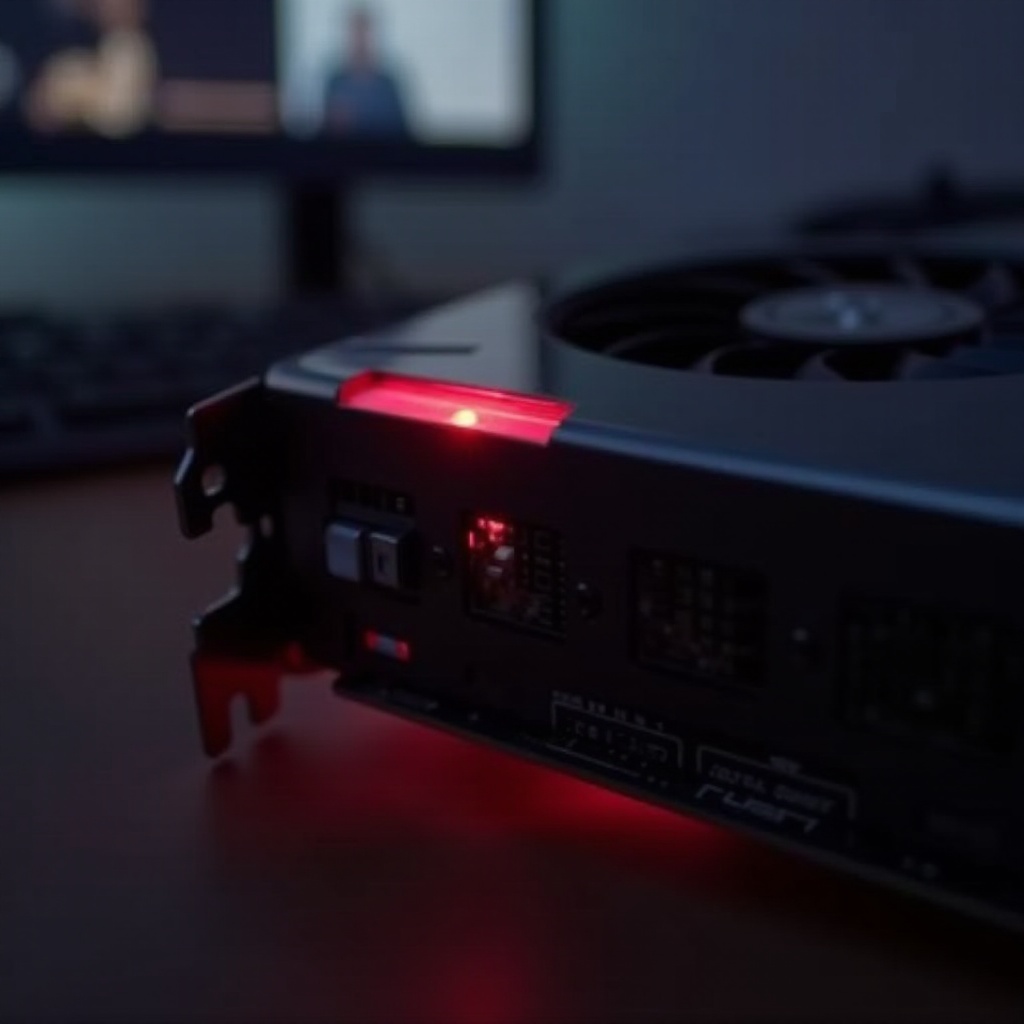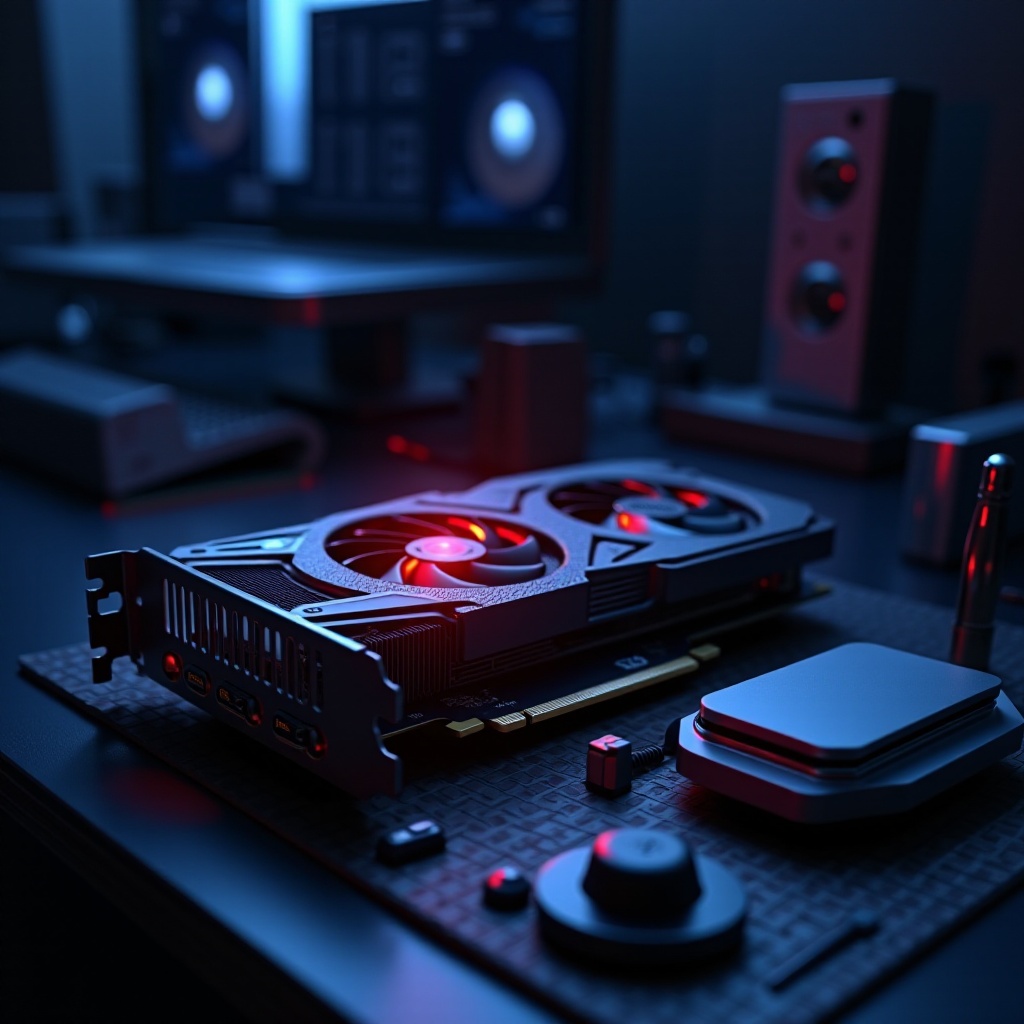Fixing the Asus GPU Red Light Issue When Off: A Comprehensive Guide
Introduction
Facing the puzzling Asus GPU red light when your computer is turned off can be quite concerning. This signal potentially indicates hardware or connectivity issues that require prompt attention. Understanding and addressing this problem can help prevent further damage and ensure your GPU operates optimally. In this guide, we’ll dive into the possible causes and offer practical solutions to tackle them effectively.

Understanding the Asus GPU Red Light
The red light on an Asus GPU is typically a warning indicator, signaling various concerns depending on the context. When your system is turned off, this light can point to a standby power issue or a misconnection. Acting as an alert mechanism, this light warns about potential problems needing resolution before you power up your system. Understanding what this light signifies allows you to take proactive steps.
When this red light appears while the computer is off, users may mistakenly ignore it. However, this warning could entail critical underlying issues that might lead to system malfunctions. Thus, a comprehensive understanding of its implications can aid significantly in troubleshooting.
Possible Causes for the Red Light When Off
Identifying the various factors contributing to the red light is crucial to effectively tackling the issue.
Power Supply Issues
A leading cause is power supply problems. An inconsistent or inadequate power supply can trigger the red light, signifying that the GPU isn’t receiving sufficient power. This might stem from a faulty power supply unit (PSU) or connection issues.
Connection and Hardware Concerns
Poor or loose connections may lead to the red light issue. Ensuring all cables, especially those for power and display, are securely connected is vital. Additionally, faulty cables or damaged ports may disrupt necessary electrical flow to your GPU.
Firmware and Software Problems
Outdated firmware or drivers can cause communication errors between the GPU and system components, potentially leading to the persistent red light when the system is off. A mismatch between software and hardware may send incorrect status signals.
Understanding these origins helps lay a foundation for effective troubleshooting, guiding you toward a systematic resolution approach.
Step-by-Step Troubleshooting Guide
Resolving the red light issue requires a deliberate approach. Follow this methodical process to diagnose and fix the problem:
Initial Inspection and Diagnostic Procedures
- Visual Inspection: Look for visible damage or disconnections in the GPU and related parts.
- Check for Updates: Update drivers and firmware to minimize software communication issues.
- Basic Power Cycle: Disconnect your system from power, wait ten seconds, and then reconnect to clear temporary power states that might cause false signals.
Checking and Securing Power Connections
- Inspect the PSU: Evaluate the power supply unit’s condition and functionality with a PSU tester if available.
- Confirm Cable Integrity: Ensure all GPU-related power cables are in optimal condition and securely fastened.
- Re-seat Components: Detach and reattach the GPU and power cables to verify tight connections.
Verifying Hardware and Software Configurations
- Perform Hardware Diagnostics: Utilize motherboard diagnostic tools for hardware error detection and resolution.
- Driver Reinstallation: Reinstall GPU drivers to fix corruption or misconfiguration issues.
- Adjust BIOS/UEFI Settings: Enter BIOS/UEFI to confirm power settings compatible with your hardware.
These steps are designed to systematically address the root of the red light signal, ideally resuming normal functionality.

Advanced Solutions
If basic troubleshooting proves ineffective, consider these advanced approaches.
Testing Alternate Components
Swap out suspect components with verified replacements. Try using a different PSU or test the GPU in another system to ascertain whether the problem is hardware-based.
Resetting BIOS/UEFI Settings
Reverting to default BIOS/UEFI settings may correct misconfigured power states causing the red light. This reset can rectify power management protocols inaccurately signaling errors.
Implementing these strategies aims to uncover persistent problems that evade basic diagnostics, facilitating a durable solution.
When to Seek Professional Help
When all troubleshooting efforts fail to resolve the issue, it might signal deeper hardware or circuitry complications. Professional assistance should be sought when software fixes and component swaps don’t rectify the problem. Certified technicians have the tools and expertise required for complex repairs.
Conclusion
Solving the Asus GPU red light issue when off entails a thorough understanding of diagnostic signals and potential hardware missteps. By systematically identifying and addressing causes — from power supply variations to outmoded firmware — you increase your chances of restoring normal GPU function. Professional help is encouraged if your efforts fall short. Staying informed enhances your capability to maintain effective hardware performance.
Frequently Asked Questions
Why is my Asus GPU red light on when the computer is off?
The red light often indicates power supply inconsistencies or improper connection. It’s a warning signal for potential hardware or firmware issues.
Can a faulty power supply cause the red light issue on my Asus GPU?
Yes, a defective PSU can disrupt power flow to the GPU, triggering the red light as a sign of insufficient power-even when your system is off.
How often should I update my Asus GPU drivers and firmware?
Regular updates should occur every few months or whenever new versions are released. Updated drivers and firmware maintain compatibility and improve performance.
